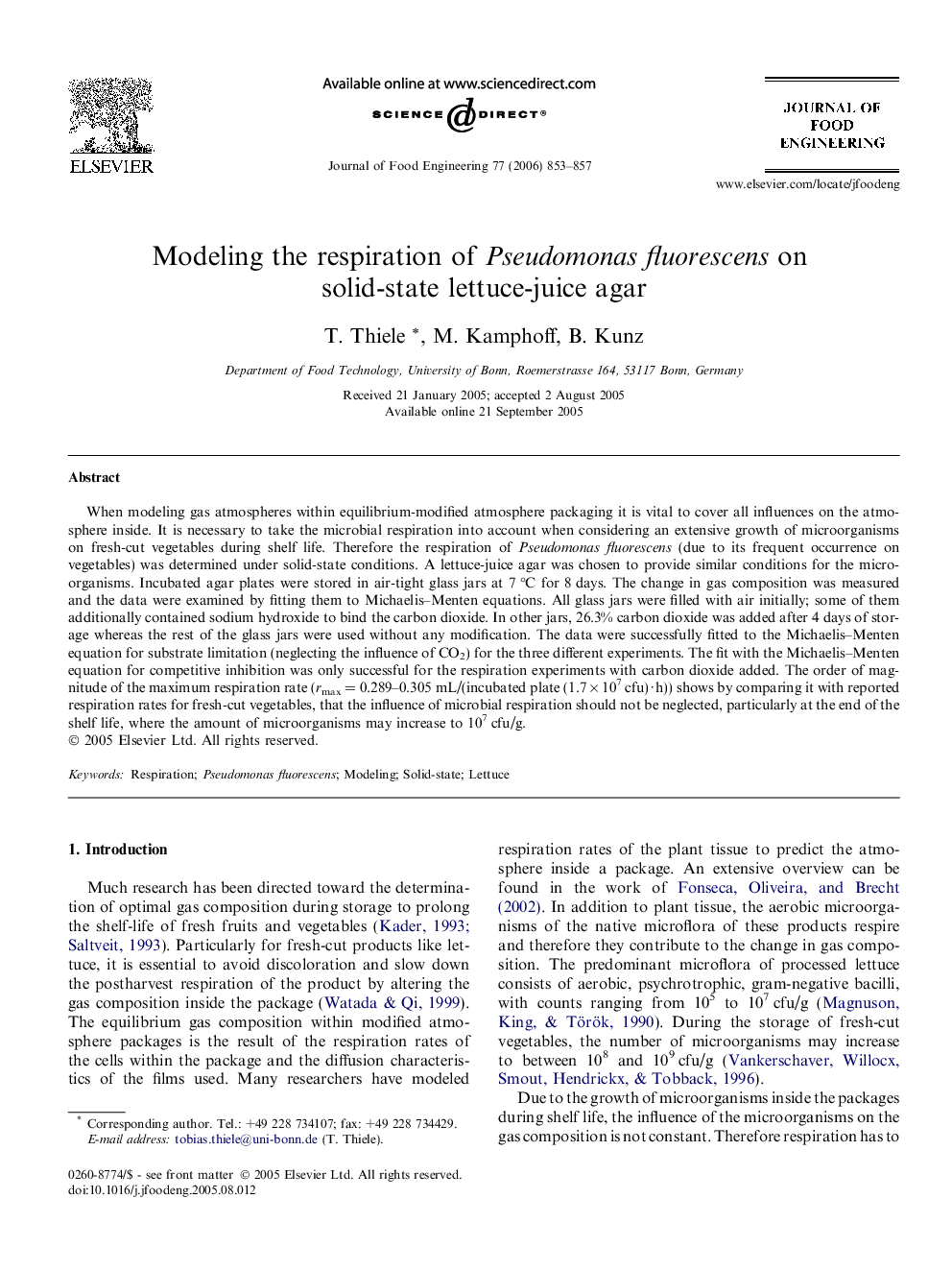| Article ID | Journal | Published Year | Pages | File Type |
|---|---|---|---|---|
| 226541 | Journal of Food Engineering | 2006 | 5 Pages |
When modeling gas atmospheres within equilibrium-modified atmosphere packaging it is vital to cover all influences on the atmosphere inside. It is necessary to take the microbial respiration into account when considering an extensive growth of microorganisms on fresh-cut vegetables during shelf life. Therefore the respiration of Pseudomonas fluorescens (due to its frequent occurrence on vegetables) was determined under solid-state conditions. A lettuce-juice agar was chosen to provide similar conditions for the microorganisms. Incubated agar plates were stored in air-tight glass jars at 7 °C for 8 days. The change in gas composition was measured and the data were examined by fitting them to Michaelis–Menten equations. All glass jars were filled with air initially; some of them additionally contained sodium hydroxide to bind the carbon dioxide. In other jars, 26.3% carbon dioxide was added after 4 days of storage whereas the rest of the glass jars were used without any modification. The data were successfully fitted to the Michaelis–Menten equation for substrate limitation (neglecting the influence of CO2) for the three different experiments. The fit with the Michaelis–Menten equation for competitive inhibition was only successful for the respiration experiments with carbon dioxide added. The order of magnitude of the maximum respiration rate (rmax = 0.289–0.305 mL/(incubated plate (1.7 × 107 cfu) · h)) shows by comparing it with reported respiration rates for fresh-cut vegetables, that the influence of microbial respiration should not be neglected, particularly at the end of the shelf life, where the amount of microorganisms may increase to 107 cfu/g.
